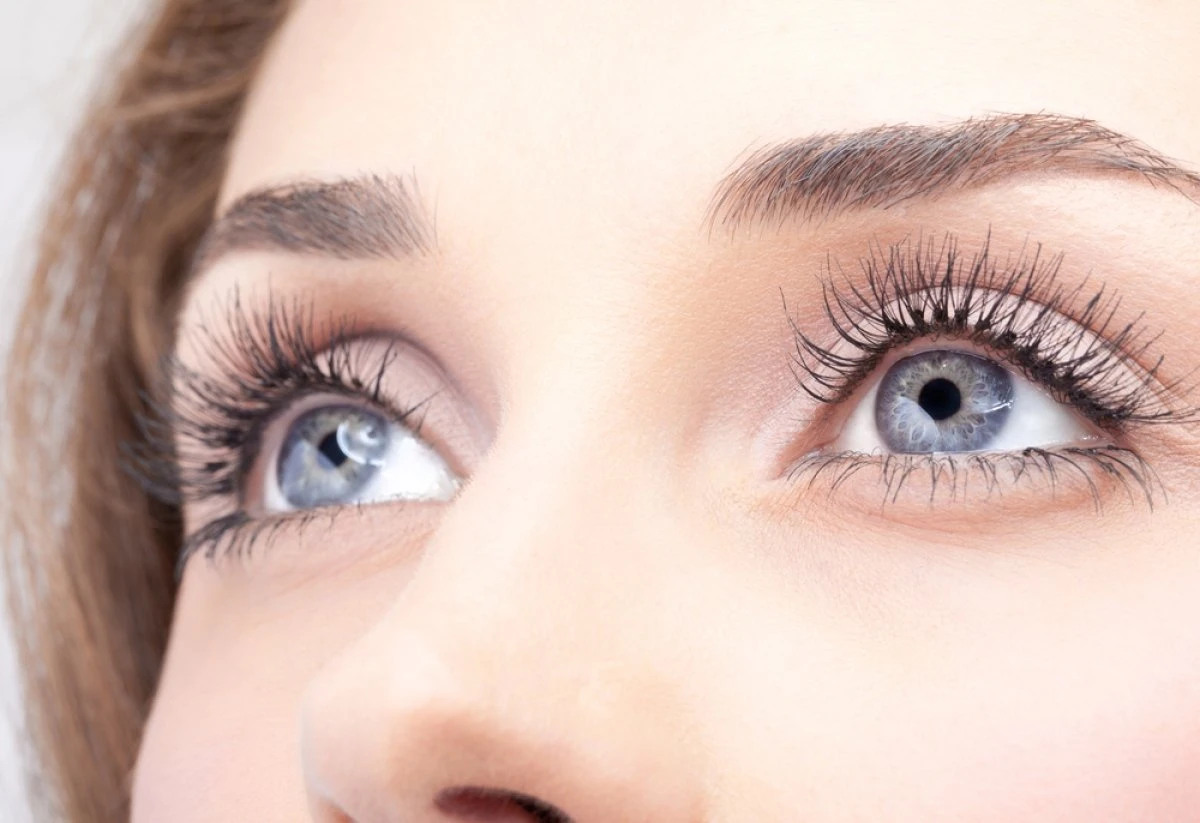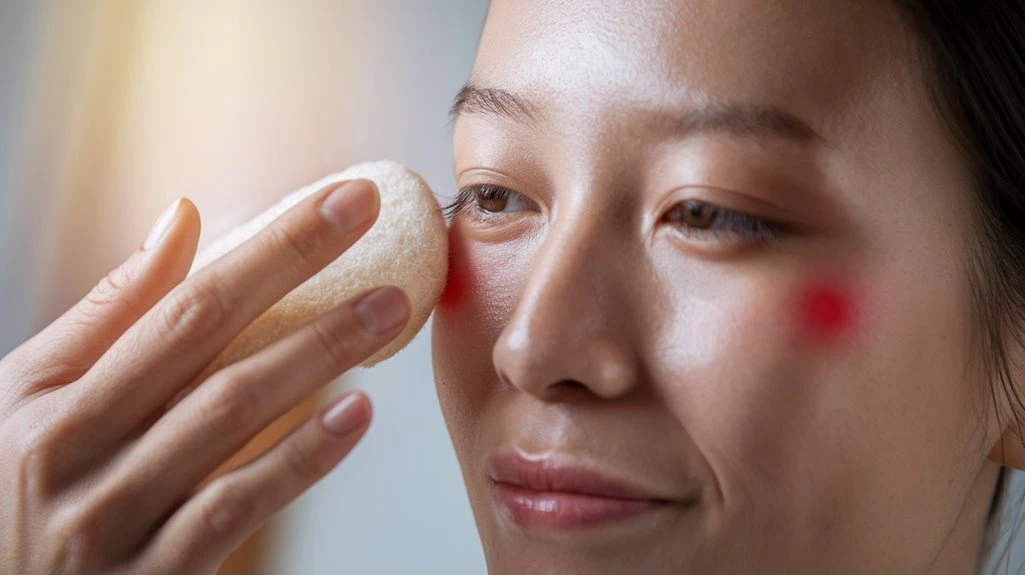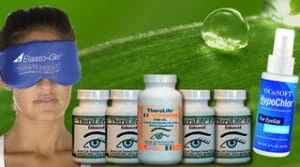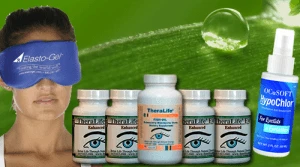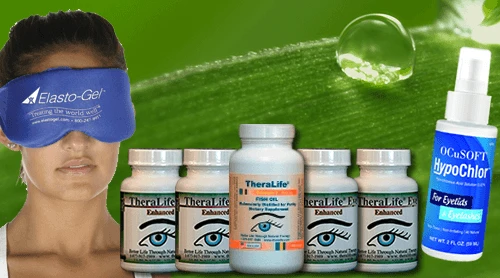Blepharitis, an inflammation of the eyelids, can cause discomfort with symptoms such as redness, irritation, and crustiness. Blepharitis treatment – Managing this condition effectively often involves lifestyle adjustments and proper treatments. Theralife.com offers a range of products and resources specifically designed to alleviate the symptoms of blepharitis and improve overall eye health.
Theralife’s products focus on natural treatments to combat blepharitis and related eye conditions. They provide supplements that enhance eye health by reducing inflammation and supporting tear production, which can be particularly beneficial for those suffering from dry eyes linked to blepharitis. Additionally, Theralife emphasizes the importance of an anti-inflammatory diet and hydration to help manage symptoms.
For those experiencing persistent blepharitis or complications, Theralife advises consulting with a healthcare professional. Their website offers detailed guides and expert advice on maintaining good eyelid hygiene and effectively using warm compresses and eyelid scrubs. Moreover, Theralife’s products are designed to work synergistically to provide comprehensive relief, allowing users to reduce reliance on pharmaceuticals and focus on holistic eye care solutions.
Explore Theralife.com to discover how their products and guidance can help you manage blepharitis and enhance your eye health naturally.
Powerful Blepharitis Treatment- TheraLife
Add To CartKey Takeaways
- Blepharitis is an eyelid inflammation causing redness, irritation, and crusting along eyelid margins, affecting up to 47% of eye care patients.
- Maintain eyelid hygiene with warm compresses and scrubs to alleviate symptoms and prevent flare-ups.
- Consult a healthcare provider before starting treatments, including antibiotics or omega-3 supplements for inflammation.
- Seek professional help for persistent symptoms, increased redness or swelling, and vision changes, to avoid complications.
- Lifestyle changes like hydration, limiting screen time, and stress reduction support eye health and symptom management.
Understanding Blepharitis: What Is It?
Blepharitis is an inflammatory condition affecting the eyelids, characterized by redness, irritation, and crust formation along the eyelid margins.
You’ll find two main blepharitis types: anterior and posterior. Anterior blepharitis affects the outside front edge of your eyelid, where your eyelashes attach. It’s often associated with bacteria or scalp dandruff.
Posterior blepharitis involves the meibomian glands within your eyelid, linked to skin conditions like rosacea or seborrheic dermatitis.
Regarding blepharitis prevalence, studies indicate it’s a common condition, affecting up to 37-47% of patients visiting eye care clinics.
This widespread occurrence suggests that many people might experience some form of eyelid inflammation in their lifetime. Understanding these types and prevalence helps you recognize and address blepharitis effectively. Chronic dry eyes can create a cycle of inflammation and blepharitis, making the condition difficult to manage for some individuals.
Recognizing the Symptoms of Blepharitis
Recognizing the symptoms of blepharitis can considerably aid in its timely management. You might notice red, swollen eyelids, often accompanied by crusty debris at the base of your eyelashes.
Symptom severity varies; some experience mild irritation, while others endure significant discomfort. Pay attention to itching, burning sensations, and excessive tearing, as these indicate potential blepharitis.
Importantly, visual disturbances can occur, including blurred vision or increased sensitivity to light. These arise when inflammation affects the tear film, vital for clear vision.
Be vigilant for frequent blinking or a gritty sensation in your eyes. Regularly evaluating these symptoms helps gauge the condition’s progression, prompting you to seek professional advice when necessary.
Early detection is essential for effective management and improved quality of life. Tear film osmolarity can serve as a diagnostic biomarker to assess the severity of dry eye symptoms often associated with blepharitis.
Identifying the Causes of Blepharitis
While understanding the causes of blepharitis, it’s important to take into account that this condition typically results from a combination of factors. Allergic reactions and environmental factors often play significant roles. Allergens can trigger inflammation, causing your eyelids to become irritated. Similarly, environmental factors like dust, smoke, or wind can exacerbate symptoms by disrupting the delicate balance of eyelid health. Bacterial infections and malfunctioning oil glands are also common contributors. Proper hygiene practices are essential for preventing flare-ups of blepharitis and maintaining eye health.
Here’s a simplified breakdown of common causes:
| Cause | Description | Impact on Blepharitis |
|---|---|---|
| Allergic Reactions | Response to allergens like pollen or pet dander | Inflammation and irritation |
| Environmental Factors | Exposure to dust, smoke, or wind | Aggravates symptoms |
| Bacterial Infections | Staphylococcus bacteria on eyelid margins | Leads to chronic inflammation |
Identifying these triggers is essential for effective management.
Diagnosing Blepharitis: What to Expect
How exactly is blepharitis diagnosed? The blepharitis diagnosis process involves a detailed eye examination by an optometrist or ophthalmologist.
They’ll inquire about your patient experiences, focusing on symptoms like itching, redness, or crusting around the eyelids.
Using a slit-lamp microscope, the doctor will examine the eyelid margins and meibomian gland openings, evaluating the presence of inflammation, blocked glands, or debris.
In some cases, they might take a sample of the crusting or oil to test for bacteria or fungi.
The TheraLife All In One Starter Kit offers a comprehensive approach to managing blepharitis, providing various tools for treatment and prevention.
This thorough evaluation helps differentiate blepharitis from other conditions like conjunctivitis.
It’s essential to provide detailed information about any previous eye conditions or treatments, as this context aids in establishing an accurate diagnosis and developing an effective blepharitis treatment plan.
Powerful Blepharitis Treatment – TheraLife
Add To CartEffective Treatments for Blepharitis
Managing blepharitis treatment effectively often involves a combination of treatments tailored to alleviate symptoms and address underlying causes. You can incorporate natural remedies and home treatments to manage this condition. Warm compresses help loosen crusts on the eyelid margin, while eyelid scrubs maintain hygiene. Consider omega-3 supplements for their anti-inflammatory properties. It’s important to maintain proper eyelid hygiene with daily cleaning routines to prevent recurrence and manage symptoms effectively for blepharitis treatment.
| Treatment | Purpose | Method |
|---|---|---|
| Warm Compress | Loosen crusts | Apply warm cloth to eyelids |
| Eyelid Scrubs | Maintain eyelid hygiene | Use diluted baby shampoo |
| Omega-3 Supplements | Reduce inflammation | Oral supplementation |
| Tea Tree Oil | Address Demodex mites | Diluted topical application |
These methods work synergistically with prescribed medications, such as antibiotics or corticosteroids, to guarantee thorough management. Always consult your healthcare provider before starting any new treatment regimen.
Daily Management Tips for Blepharitis
To effectively manage blepharitis daily, establish a consistent eyelid hygiene routine. Gently cleanse your eyelids with a warm compress for 5-10 minutes, followed by a lid scrub using a mild, non-irritating cleanser. This reduces bacterial load and unclogs oil glands. Incorporate home remedies like diluted tea tree oil, which has antimicrobial properties, to alleviate symptoms. Dietary adjustments are essential; increase omega-3 fatty acids through fish or supplements, as they help maintain healthy eyelid margins by reducing inflammation. Avoid processed foods high in trans fats, which can exacerbate symptoms. Consistency is key; perform these steps twice daily. Regular adherence to these practices can markedly minimize blepharitis flare-ups and improve ocular comfort. Warm compresses, as recommended by scientific studies, improve meibomian gland function, aiding in the blepharitis treatment and symptoms.
Lifestyle Changes to Support Eye Health
A consistent eyelid hygiene routine plays a vital role in managing blepharitis, but enhancing overall eye health requires lifestyle changes beyond daily care. Dietary adjustments, like increasing omega-3 fatty acid intake, improve meibomian gland function, reducing inflammation. Consider incorporating flaxseed or fish oil supplements. Stress management is essential, as stress can exacerbate symptoms. Techniques such as mindfulness meditation or yoga can decrease stress hormone levels, supporting ocular health. TheraLife Omega-3 is purified via molecular distillation to ensure the removal of heavy metals like mercury and lead, promoting overall purity. Prioritize hydration, as it maintains tear film stability. Limit screen time to prevent digital eye strain, which aggravates blepharitis. These adjustments can greatly enhance your eye health.
| Lifestyle Change | Benefits |
|---|---|
| Omega-3 Intake | Reduces inflammation |
| Flaxseed/Fish Oil | Enhances meibomian function |
| Mindfulness/Yoga | Lowers stress hormone levels |
Best Blepharitis Treatment From TheraLife
Add To Cart
When to Seek Professional Help for Blepharitis Treatment
While self care strategies like warm compresses and eyelid hygiene can be effective, there are warning signs indicating the need for professional intervention. If your symptoms persist despite consistent self care, or if you experience increased redness, swelling, or pain, seek medical advice. Additionally, vision changes or the presence of sores or crusting should prompt a consultation. A healthcare professional can assess the severity of your condition and recommend treatments beyond home care, such as antibiotics or steroid eye drops. It’s essential not to delay professional care, as untreated blepharitis can lead to complications like chronic eye inflammation or damage to the cornea.
Powerful Blepharitis Treatment – TheraLife
Add To CartFrequently Asked Questions
Can Blepharitis Be Related to Other Eye Conditions?
Yes, blepharitis is often associated with other eye conditions.
When you experience eyelid inflammation, it can lead to or exacerbate dry eyes. The inflammation affects the meibomian glands, disrupting the lipid layer of your tear film, which is essential for moisture retention.
Consequently, your eyes may feel gritty or burn. Studies have shown that managing blepharitis treatment can improve dry eye symptoms, suggesting a strong interrelation between these conditions.
Is Blepharitis Contagious to Others?
Blepharitis itself isn’t contagious, but poor hygiene practices can lead to indirect transmission of bacteria associated with the condition.
You should avoid sharing towels or eye makeup to minimize this risk.
Maintaining good eyelid hygiene, like regular cleaning with warm compresses and eyelid scrubs, can help prevent bacterial buildup.
Evidence suggests that these measures effectively reduce symptoms and lower the chance of spreading bacteria to others, ensuring better eye health.
What Are Potential Complications of Untreated Blepharitis?
Imagine a ticking time bomb—untreated blepharitis can lead to it.
Chronic inflammation may cause eyelid infections, damaging delicate tissues. You risk developing dry eye syndrome, making your eyes feel like sandpaper.
Left unchecked, this condition can result in eyelash loss or even misalignment, affecting your vision.
Studies show that persistent blepharitis can transform into more severe eye issues, so addressing it early is essential to prevent complications.
Are There Any New Research Developments in Blepharitis Treatment?
You’re probably wondering about new therapies for blepharitis treatment. Recent findings indicate promising advancements.
Researchers have identified anti-inflammatory agents and microbiome-targeted treatments that show efficacy in managing symptoms. Studies highlight the potential of omega-3 supplements and intense pulsed light therapy for alleviating inflammation.
Additionally, new eyelid cleansing devices are under evaluation for efficacy in improving eyelid hygiene. These developments could considerably enhance treatment options for blepharitis treatment in the future.
Can Blepharitis Affect My Vision Long-Term?
Blepharitis can impact vision clarity, but long-term effects are usually minimal if managed properly.
Chronic inflammation might lead to scarring or irregularities on the eyelid margin, potentially causing misalignment of lashes that affect vision. However, these complications are rare with appropriate treatment.
Research indicates maintaining eyelid hygiene and managing underlying conditions effectively reduces risks.
Regular check-ups with your ophthalmologist guarantee any emerging issues are promptly addressed, preserving your vision in the long run.
Powerful Blepharitis Treatment- TheraLife
Add To CartConclusion
TheraLife’s products provide significant benefits for managing blepharitis and enhancing overall eye health. By recognizing symptoms early and accurately identifying causes, their solutions support prompt diagnosis and effective treatment. TheraLife emphasizes daily management tips and lifestyle changes to promote eye health, backed by scientific evidence and best practices. Their natural supplements and dedicated eye care products aim to reduce discomfort, prevent flare-ups, and improve eye conditions such as dry eyes, uveitis, and chalazion. TheraLife’s holistic approach and customer-focused solutions are designed to help you maintain optimal eye health and effectively manage blepharitis.

